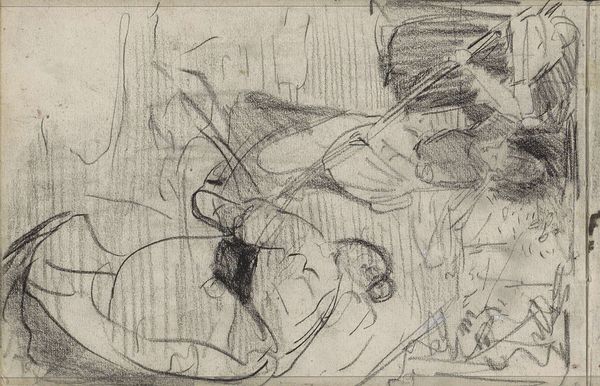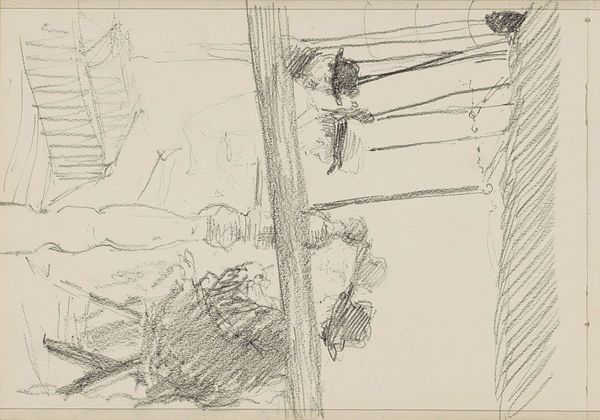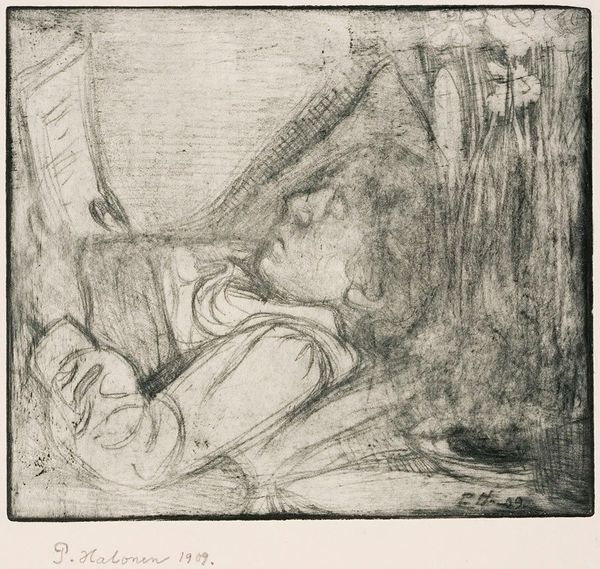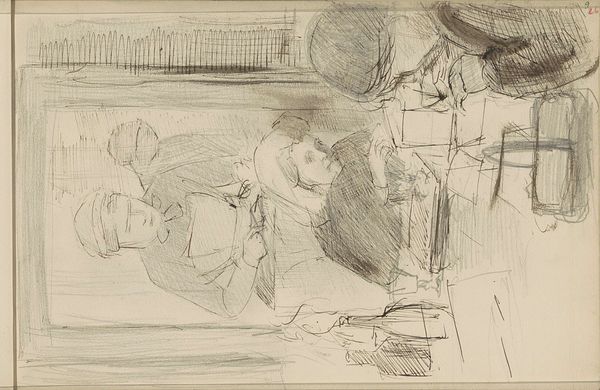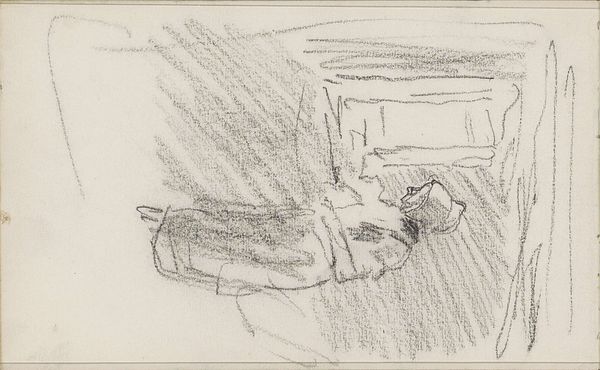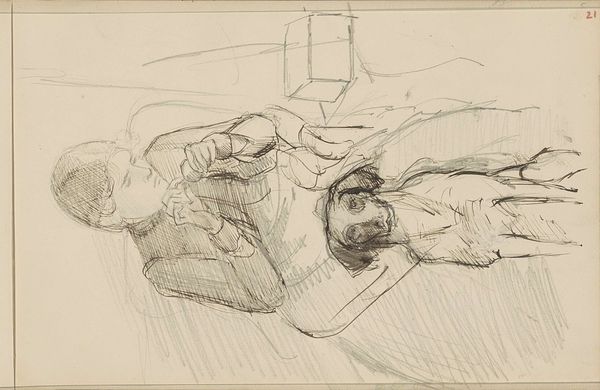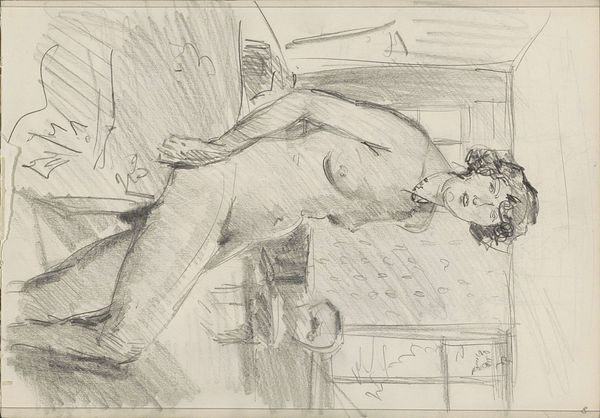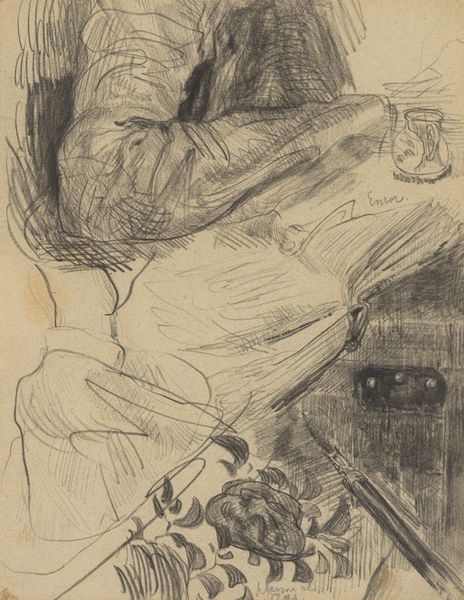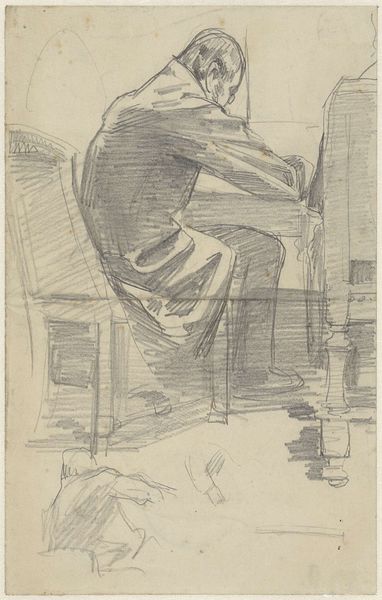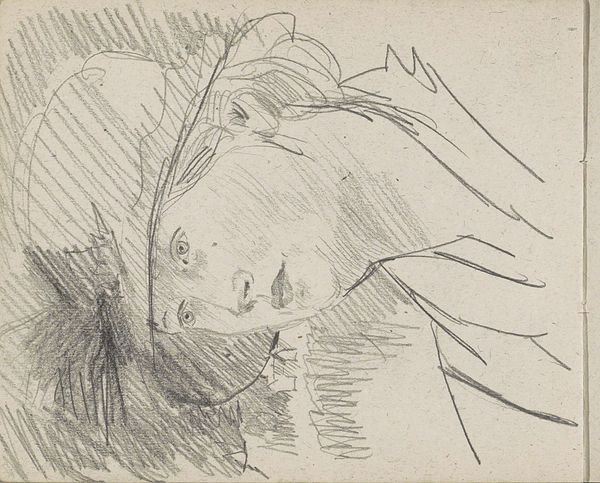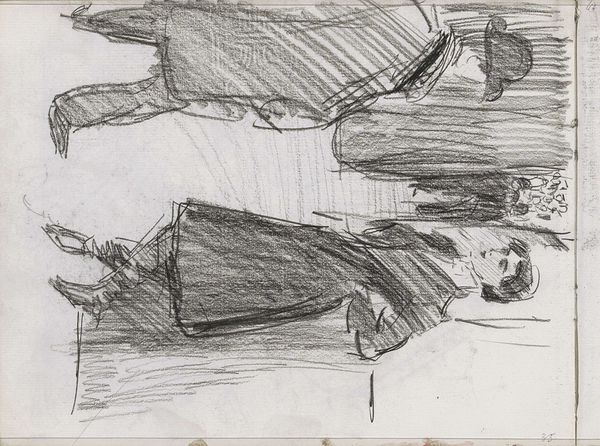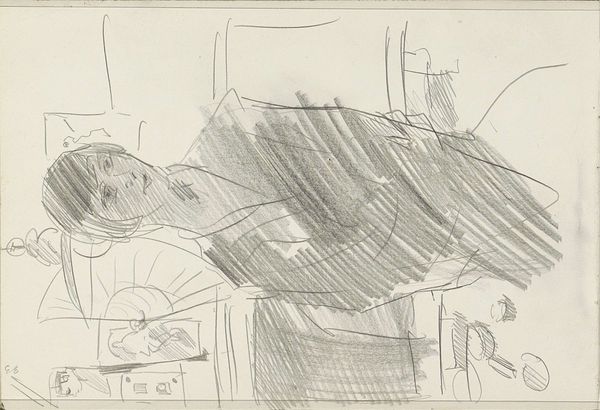
Copyright: Rijks Museum: Open Domain
Editor: This is Isaac Israels' "Zittende vrouw, mogelijk aan een piano," created sometime between 1875 and 1934. It's a graphite drawing currently held at the Rijksmuseum. There's a real sense of intimacy in this piece. The sketchiness gives the impression of a stolen moment, doesn't it? What are your thoughts about it? Curator: What strikes me is the visible labor embedded within this sketch. We see the artist's hand, the pressure of the graphite, the erasures – the entire process laid bare. The drawing, as a material object, becomes a document of its own making, which intersects with notions of artistic production in that period. Where do the materials originate, and how accessible were they for the working class versus someone of Israels’ standing? It begs the question of class and art-making during that time, wouldn't you say? Editor: Absolutely, and you can really feel the weight of that in the dark areas especially. The quick, light strokes contrast so much with the heavier shading. Was that contrast a common approach then? Curator: To approach the work through its production helps illuminate this contrast. Consider the paper itself – its availability and cost would dictate the artist’s freedom. And what about Israels’ choice of graphite? How does its inherent ephemerality—the ease with which it can be erased or smudged—contribute to the feeling you initially described as “intimate?” Are we witnessing a rejection of permanence and a celebration of the sketch as an artwork in its own right, questioning established notions of “finished” art? Editor: That’s fascinating. I hadn’t considered how the medium itself contributes to the message, that this might be intentional, not just preliminary. Curator: Exactly. The material choices are never neutral; they carry a cultural and economic weight, influencing not only the appearance of the artwork but also its meaning within a wider societal context. Editor: This makes me consider the context of who would possess and engage with a simple graphite drawing like this versus a fully realized oil painting. I’ll definitely look at materiality with a deeper understanding from now on. Curator: Indeed, by foregrounding material analysis, we gain insight into production processes and hopefully deconstruct conventional boundaries within art history itself.
Comments
No comments
Be the first to comment and join the conversation on the ultimate creative platform.
